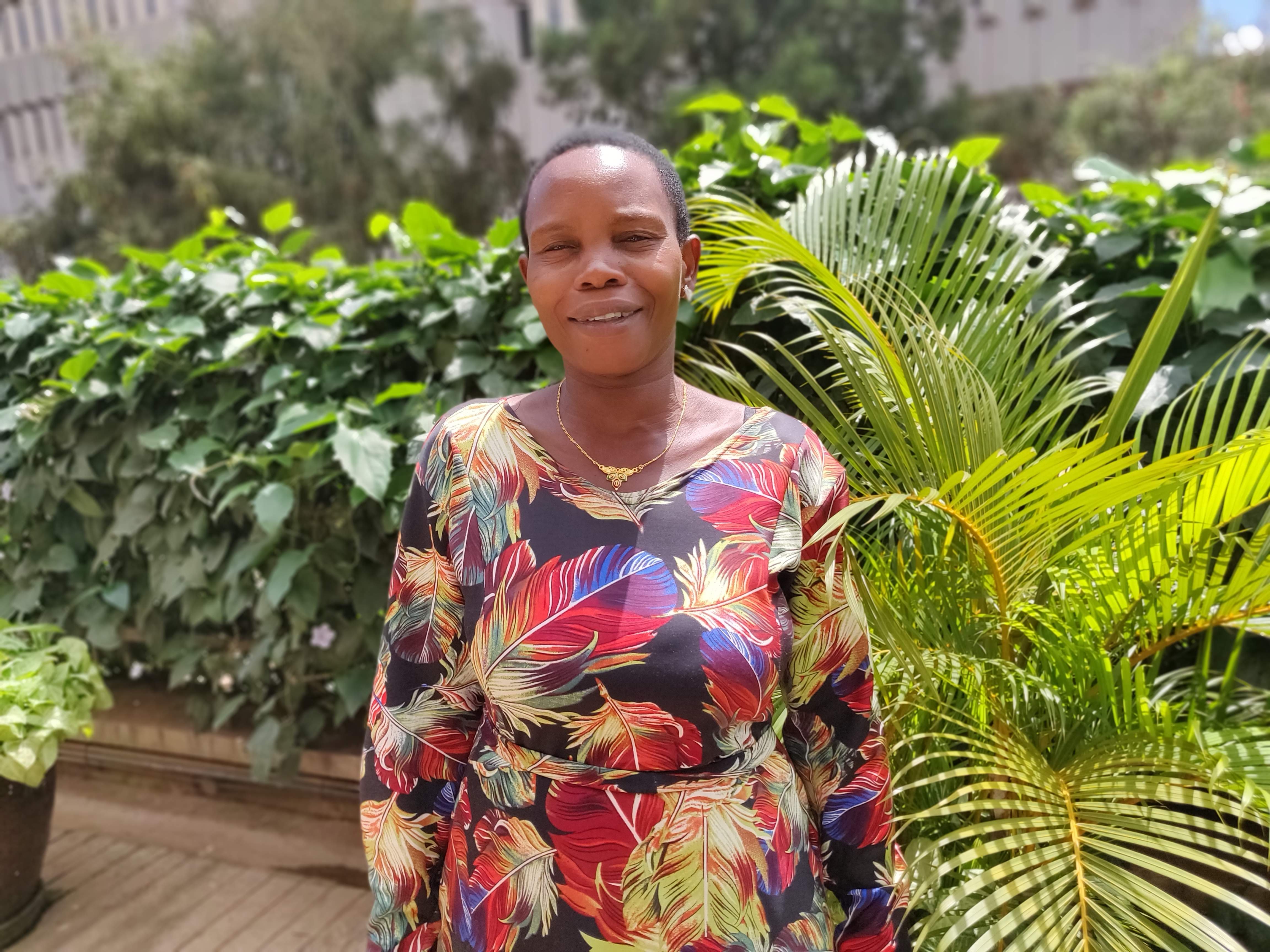Robina Nali had eye problems for as long as she could remember. Throughout her childhood, she had difficulty seeing and was taken to various hospitals for treatment, but issues with her vision persisted.
In adulthood, it worsened, with her eyelashes irritating her to an extent that the issue prevented her from carrying out daily tasks.
“I could not see properly when writing. I was having problems cooking and farming, and staying in the sunshine was a problem,” she told Global Citizen. “I would go to the hospital for treatment, but no one could explain what it was.”
People in her community who claimed to be health workers — she later found out they were not — said they could help.
For 20,000 Ugandan shillings (US$5.50), Nali would visit them and have her eyelashes plucked off in what she thought was a medical procedure, which she did several times.
It helped alleviate the irritation temporarily, but in a matter of weeks, her eyelashes would grow out and she would once again be in pain and unable to complete her day-to-day chores.
Last August, Nali heard about a health initiative that was recruiting volunteers to help identify trachoma cases and she chose to participate. The program was part of an initiative by Uganda’s Ministry of Health, the World Health Organization (WHO) and organizations like Sightsavers Uganda, which has been working to tackle neglected tropical diseases (NTDs) in the East African country for the last 65 years.

Trachoma, an NTD, is the leading cause of preventable blindness of infectious origin in the world. Infection spreads through personal contact and by flies that have been in contact with discharge from the eyes or nose of an infected person. It begins as a bacterial infection and worsens if not treated — eventually it lines the inside of the eyelid with scars and forces the eyelashes to turn inward, which affects vision, causes pain, and can lead to blindness.
During the training, volunteers took turns examining one another to prepare for the community screenings. When it was Nali’s turn to be examined, she found out she had trachoma and was a suitable candidate for the surgery.
“After corrective surgery, I didn’t have any problems. I could see normally, my pain was relieved, and I resumed my [responsibilities],” she said.
Fred Tibamwagine, a senior medical clinical officer with the Ministry of Health in Uganda, says the partnership with the WHO and Sightsavers, which began in 2016, is a major reason why trachoma has nearly been eliminated in Uganda.
There are two stages of trachoma: active and chronic. Active trachoma is an early stage of the disease, exemplified by red eyes and discharge, is found in children under 10 years of age, and it is treated through medication. As trachoma develops in adults, it becomes chronic, which impacts a person’s eyelids and eyelashes, causes pain, and must be treated with surgery — a simple and quick 15-minute procedure that prevents blindness.
Tibamwagine, who was trained as an ophthalmic clinical officer, would perform up to 10 surgeries per day.
“We would call it the disease of the poor because the ones who were marginalized and neglected suffered a lot,” he said.
Tibamwagine recalls how trachoma would impact entire communities, saying he often saw cases where the elderly went blind due to trachoma, and children in their family would not go to school, in order to care for them. Things have changed drastically since then, he says.

“People now do their normal activities. The children who were helping the blind have gone back to school and now the hygiene, which was very poor, has improved. A lot of changes, positive changes have happened,” he said.
Johnson Ngorok, the country director of Sightsavers Uganda, says in 2006 when health workers surveyed people across Uganda, they found trachoma in all 50 districts of the country. Since then, it has been eliminated in 46 districts, with four districts remaining. All of them are in the Karamoja sub-region of the country, with a nomadic population that has been difficult to reach. However, treatment is ongoing with two remaining rounds of medication needed for those who have trachoma, according to Ngorok.
“The end is in sight,” Ngorok said. “We just need a little push to get over the cliff and reach elimination nationally.”
Although trachoma has been monitored in the country since 2006, a systematic effort to eliminate the disease was only put into effect in 2014, Ngorok explained, due to funding from the Queen Elizabeth Diamond Jubilee Trust, which sought to eliminate the disease by 2019.
“At the moment, we don’t have funding so the program has stopped, which is really a shame,” Ngorok said. “But we would only need one more year … to eliminate trachoma in the country.”
Trachoma has blinded or visually impaired around 1.9 million people globally, and it is endemic in 44 countries, according to the WHO. According to the latest data, 142 million people live in trachoma endemic areas, putting them at risk of blindness.
Still, significant strides have been made to eliminate the disease. The number of people requiring surgery for trachomatous trichiasis, the stage of trachoma that is blinding, has dropped by nearly 70% from 7.6 million in 2002 to 2.5 million in 2019.